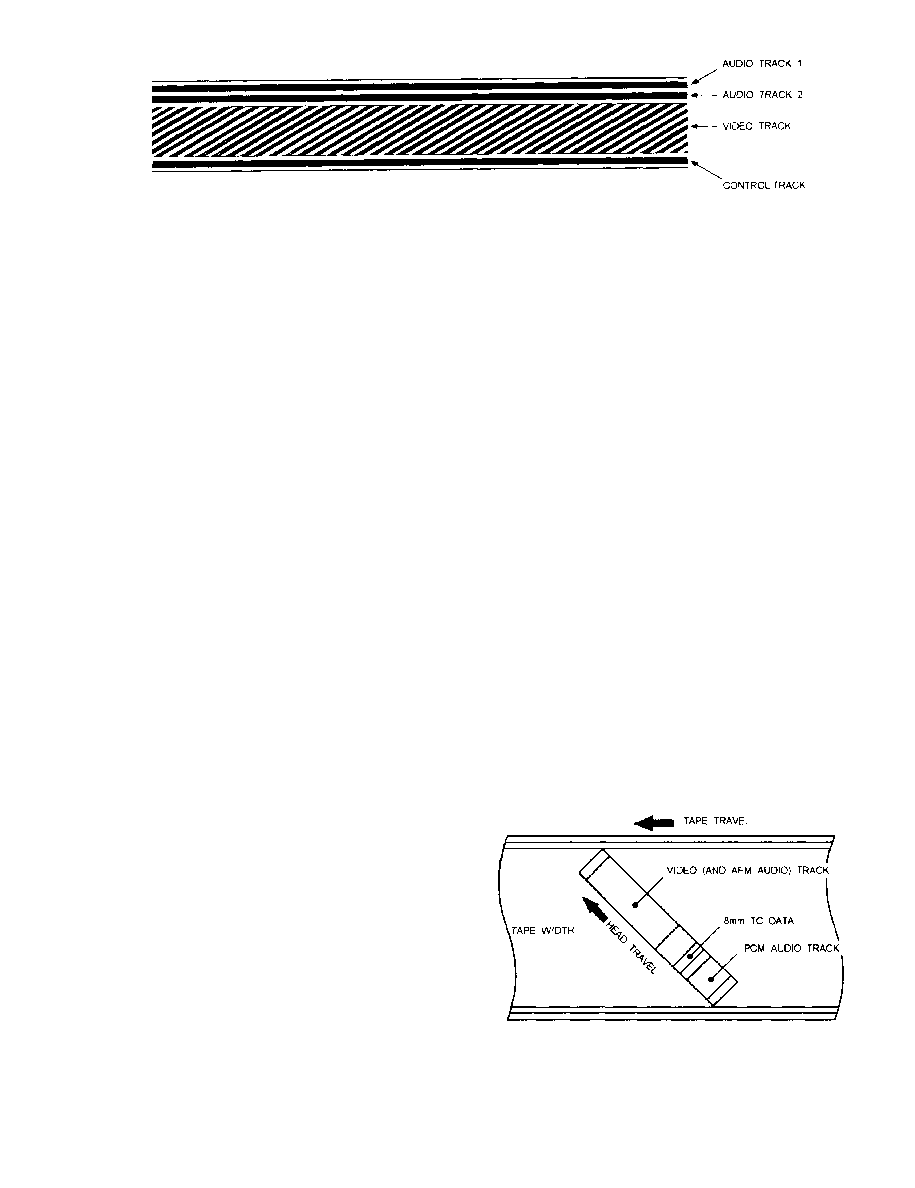
DOFMaster
for Windows
On-line
Depth of Field
Calculator
DOFMaster for Mobile Devices
On-line
Depth of Field
Table
Hyperfocal
Distance Chart
Articles
FAQ
Recommended
Books
Support
Contact
Links
Home
for Windows
On-line
Depth of Field
Calculator
DOFMaster for Mobile Devices
On-line
Depth of Field
Table
Hyperfocal
Distance Chart
Articles
FAQ
Recommended
Books
Support
Contact
Links
Home
As an Amazon Associate I earn from qualifying purchases.
![]()
picture information, two audio tracks that contain all
videotape and rotation speed of the video heads
(fig. 13-6).
one pass of the head records a complete field of video
information (Y+C). The next pass of the head, (or, if you
have a two-head machine, the second head) lays down
the second field right next to it, completing a single
two heads must "`write" sixty tracks (thirty frames) for
each second of NTSC video. In the four-head VTR, one
pair of heads records at normal tape speed and the other
pair records at a slower speed.
recording heads that are near the edge of the tape and
run along the length of the videotape. Because of the
demand for stereo audio and for keeping certain sounds
mark each complete television frame. These pulses
synchronize the tape speed and the rotation speed of the
recording heads. This allows the tape to be played on a
similar machine without picture breakups. Because the
control track marks each frame of recorded video, it also
aids in videotape editing.
and other data between the video and audio portion of a
single-slanted track The time code has been developed
to provide a precise editing reference by recording the
is digitally recorded by units of hour, minute, second,
other recording formats.
also uses a pulse code modulation (PCM) audio track
video home system (VHS). The video/AFM audio track
receiver (TV set or monitor). At the receiver, the video
and audio signals are separated and processed by
separate circuitry. This circuitry changes the video and
audio signals back to sound that you can hear and
pictures that you can see. The sound is reproduced at the
loudspeaker, and the picture is reproduced on the face
of the cathode-ray picture tube.
Basic Photography Course

As an Amazon Associate I earn from qualifying purchases.
WWW.DOFMASTER.COM
© 2006 Don Fleming. All rights reserved.
© 2006 Don Fleming. All rights reserved.